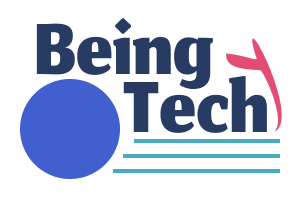How To Make Online Money
There are several ways to make money online through content creation. Here are a few options:
- Ad revenue: If you have a blog or website that generates traffic, you can earn money by displaying ads on your site. You can sign up for programs like Google AdSense or MediaVine, which pay you based on the number of clicks or impressions your ads receive.
- Affiliate marketing: You can also earn money by promoting products or services on your website or social media channels. You can join affiliate programs like Amazon Associates or Commission Junction, and earn a commission on any sales made through your unique affiliate link.
- Sponsored content: Brands may be willing to pay you to create sponsored content, such as blog posts, videos, or social media posts that promote their products or services. You can reach out to brands directly or sign up for influencer marketing platforms like AspireIQ or Influence.co to find sponsored content opportunities.
- Online courses or e-books: If you have expertise in a particular field, you can create an online course or e-book and sell it on platforms like Udemy or Amazon.
- Patreon: You can create a Patreon account, where fans can support your content creation through monthly subscriptions. In return, you can offer exclusive content or rewards to your patrons.
It's important to note that creating valuable and engaging content is key to attracting an audience and making money online. So, focus on creating high-quality content that people will want to consume and share.
Ad revenue is the income earned by content creators from displaying ads on their website or online platform. Advertisers pay to have their ads displayed on these platforms, and the content creator earns a portion of that payment for hosting the ad on their site.
Some popular platforms for ad revenue include:
- Google AdSense: This is a popular ad network that displays ads on your website or YouTube channel. You earn money based on the number of clicks or impressions your ads receive.
- MediaVine: This is a platform that specializes in displaying ads on websites and blogs with high traffic. MediaVine pays based on ad impressions and offers higher payouts than many other ad networks.
- AdThrive: This is another ad network that focuses on displaying ads on high-traffic websites and blogs. AdThrive pays based on ad impressions and offers competitive rates.
- Amazon Associates: This is an affiliate marketing program offered by Amazon. You can earn a commission by promoting Amazon products on your website or blog.
- Facebook Ads: This is an advertising platform that allows you to create and display ads on Facebook and Instagram. You can earn money by promoting your own products or services or by displaying ads for other businesses.
There are many other ad networks and platforms available, and it's important to research and compare them to find the best fit for your content and audience.
Affiliate marketing platforms are websites or networks that connect advertisers with content creators who want to earn a commission by promoting their products or services. Here are some popular affiliate marketing platforms:
- Amazon Associates: This is an affiliate program offered by Amazon. You can promote any product on Amazon and earn a commission on sales made through your unique affiliate link.
- ShareASale: This is a large affiliate marketing network that offers a wide range of products and services to promote. You can browse through their list of merchants and choose which products to promote.
- Commission Junction: This is another popular affiliate marketing network that offers a variety of products and services to promote. You can search for merchants by category or keyword and earn a commission on any sales made through your affiliate link.
- Rakuten Marketing: This platform offers affiliate marketing programs for a variety of brands, including major retailers like Walmart and Macy's.
- ClickBank: This platform focuses on digital products, such as e-books and online courses. You can earn a commission by promoting these products on your website or social media channels.
Sponsored content is content that is created or sponsored by a brand, with the goal of promoting their products or services. This can take many forms, including blog posts, social media posts, videos, or articles. The sponsored content is usually created by the content creator in collaboration with the brand, and it should be clearly labeled as sponsored or promoted content.
The goal of sponsored content is to reach a wider audience and promote the brand's products or services in a more subtle and engaging way than traditional advertising. It can also help build brand awareness and credibility by associating the brand with high-quality content and influential content creators.
Sponsored content should be transparent and clearly labeled as such, to avoid misleading the audience. Content creators should also be selective about the brands they work with and ensure that the sponsored content aligns with their values and audience.
Patreon is a membership-based platform that allows content creators to receive ongoing financial support from their fans or followers, known as "patrons." The platform enables creators to offer exclusive content or perks to their patrons in exchange for their support.
Creators can set up different membership tiers with varying levels of rewards or benefits, such as early access to content, exclusive merchandise, or personalized shoutouts. Patrons can choose the level of support they want to offer and receive the corresponding benefits.
Patreon charges a small fee for each transaction, and creators receive the remaining revenue from their patrons. Patreon can provide a reliable source of income for content creators, allowing them to focus on creating high-quality content without relying solely on advertising revenue or sponsorships.
Patreon is often used by content creators in areas such as music, art, writing, and podcasting, as well as by influencers and bloggers. It allows creators to build a dedicated community around their content and engage with their fans on a more personal level.

